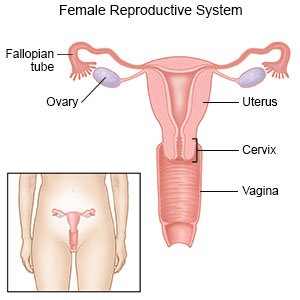Uterine Tissue Removal
Medically reviewed by Drugs.com. Last updated on Aug 4, 2025.
What is uterine tissue removal?
Uterine tissue removal is a procedure used to remove fibroids and polyps from inside your uterus. This may help reduce heavy bleeding during your monthly periods. You may still have normal periods and become pregnant after this procedure.
 |
How do I prepare for my procedure?
- The procedure will be done at a hospital, your healthcare provider's office, or an outpatient facility. Your provider will talk to you about how to prepare. You may be told not to eat or drink anything after midnight on the day of your procedure. Arrange for someone to drive you home after your procedure.
- You may need to stop taking blood thinners or aspirin several days before your procedure. This will help decrease your risk for bleeding. Your provider will tell you what medicines to take or not take on the day of your procedure. You may be given an antibiotic to prevent infection. Tell healthcare providers if you have ever had an allergic reaction to an antibiotic.
Related medications
What will happen during my procedure?
- General or local anesthesia may be used for this procedure. General anesthesia means you will be asleep during the procedure. Local anesthesia means you will be awake and may feel pressure or pushing, but you should not feel pain.
- Your healthcare provider will gently insert a device into your vagina. The device opens the walls of your vagina so your provider can see your cervix. Tools or liquid will be used to open your cervix. Your provider will guide a camera through your cervix and into your uterus. The camera will allow your provider to see inside your uterus to find the fibroid or polyp.
- Your provider will guide a thin wand through your vagina and into your uterus. One side of the wand is made to cut the fibroid or polyp into pieces. Suction is used to pull the small pieces into the wand to remove them from your uterus. When all the pieces have been removed, the wand will be removed.
What should I expect after my procedure?
You may have mild lower abdominal cramping after the procedure. This should last 1 to 2 days. Your healthcare provider may tell you to take acetaminophen or an NSAID pain medicine, such as ibuprofen. You may be able to go home the same day. Plan to rest when you get home. You can return to your regular activities within 2 days or as directed.
What are the risks of this procedure?
You may bleed more than expected or get an infection. Your uterus may be torn, or your cervix may be damaged. You may get fibroids or polyps again, even if your treatment is successful. Scar tissue may form in your uterus. You may have fluid overload. This means your body absorbs too much fluid produced during the procedure. Your provider will have to stop the procedure if this happens.
Care Agreement
You have the right to help plan your care. Learn about your health condition and how it may be treated. Discuss treatment options with your healthcare providers to decide what care you want to receive. You always have the right to refuse treatment. The above information is an educational aid only. It is not intended as medical advice for individual conditions or treatments. Talk to your doctor, nurse or pharmacist before following any medical regimen to see if it is safe and effective for you.© Copyright Merative 2025 Information is for End User's use only and may not be sold, redistributed or otherwise used for commercial purposes.
Further information
Always consult your healthcare provider to ensure the information displayed on this page applies to your personal circumstances.
